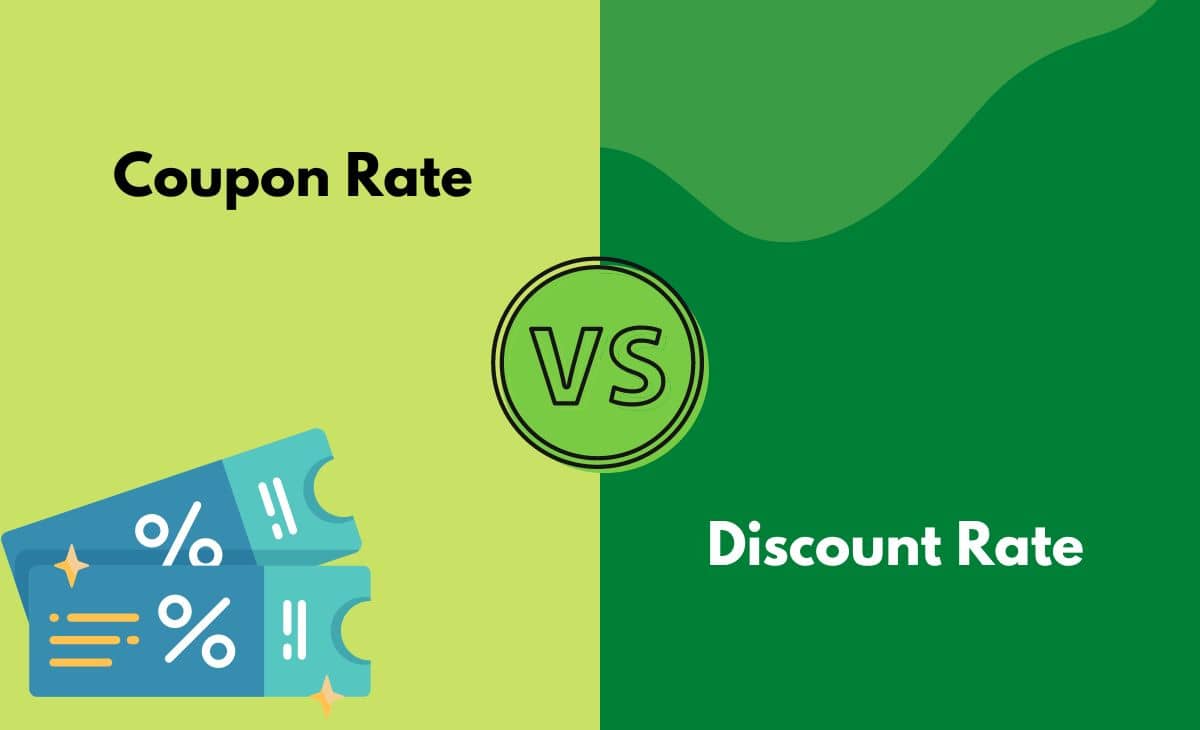
In reality, bondholders are as concerned with a bond’s yield to maturity, especially on non-callable bonds such as U.S. Treasuries, as they are with current yield because bonds with shorter maturities tend to have smaller discounts or premiums. Coupon rates are largely influenced by prevailing national government-controlled interest rates, as reflected in government-issued bonds (like the United States’ U.S. Treasury bonds). This means that if the minimum interest rate is set at 5%, no new Treasuries may be issued with coupon rates below this level. However, preexisting bonds with coupon rates higher or lower than 5% may still be bought and sold on the secondary market.

Step-by-Step Calculation of the Coupon Rate
On the specified dates when the interest payments were due, bondholders would physically detach the coupons from the bond certificates and present them for payment. Conversely, if interest rates are expected to decrease, new bonds may have lower coupon rates. Poor credit rating is an indicator that a bond issuer has a higher chance of “defaulting”, or being financially unable to pay back the loan. The interest payment is equivalent to the bond’s coupon rate, which is a percentage of the bond’s “principal” also known as its “face value” or “par value”. Interest payments represent the profit made by a bondholder for loaning money to the bond issuer.
Factors Affecting the Coupon Rate: Credit Rating, Market Conditions, and More
If a second investor purchases the same bond for $110, he will also receive the same $3 in annual interest payments. The current yield of the bond changes again because of the new price, becoming 2.73%. Yield to Maturity (YTM) refers to the percentage rate of return for a bond assuming that the investor holds it until maturity. At the time it is purchased, a bond’s yield to maturity and its coupon rate are the same. However, while the coupon rate is fixed, the YTM will vary depending on the market value and how many payments remain to be made. In other words, the current yield is the coupon rate times the current price of the bond.
Fixed vs. Variable Coupon Rates and Investment Impact
The investors will receive their returns through coupons paid out during the life of the bond, as well as the face value when the bond matures. However, bonds issued in a high-interest-rate environment are more likely to have a higher coupon rate. Even when the interest rate goes down, the coupon rate will still stay the same. Hence, a higher coupon rate bond, in general, provides better protection for the investors. Before we dive into explaining the coupon rate definition, we need to first discuss what a bond is. For many business entities out there, issuing bonds is the easiest way to acquire money from investors or the market.
- Before we dive into calculating the current bond price with our bond valuation calculator, let’s take some time to talk about what a bond is.
- The annual coupon rate formula is used to determine the amount of interest that the bondholder will get upon investment in it.
- Our mission is to empower readers with the most factual and reliable financial information possible to help them make informed decisions for their individual needs.
- It’s easy to get started when you open an investment account with SoFi Invest.
- A coupon or coupon payment is the annual interest rate paid on a bond, expressed as a percentage of the face value and paid from issue date until maturity.
That’s because bonds trade either at a premium to the par value (higher than the face value), or at a discount to par (lower than the face value). Because the coupon rate of the bond stays the same until maturity, it may represent a higher or lower percentage coupon rate equation of the par value — this is called the yield. For plain-vanilla bonds, no, the coupon rates are set when the bonds are formed. It is the amount of money the bond investor will receive at the maturity date if the bond issuer does not default.
It is to be noted that the coupon rate is calculated based on the bond’s face value or par value, but not based on the issue price or market value. A bond issuer decides on the coupon rate based on prevalent market interest rates, among others, at the time of the issuance. Market interest rates change over time, and as they move lower or higher than a bond’s coupon rate, the value of the bond increases or decreases, respectively. Since a bond’s coupon rate is fixed all through the bond’s maturity, bonds with higher coupon rates provide a margin of safety against rising market interest rates. Calculating the coupon rate of a bond is a straightforward process that involves a simple formula.
When interest rates rise, based on changes to the federal funds rate, that can cause bond prices to fall. When bond prices change that doesn’t impact the coupon rate, which stays the same. But a bond’s price is an important consideration for investors who trade on the secondary market because it impacts the yield to maturity. The coupon rate is the interest rate paid on a bond by its issuer for the term of the security.
In our bond price calculator, you can follow the present values of payments on the bond price chart for a given period. Using an incorrect face value can also lead to errors in calculating the coupon rate. Make sure to use the correct face value, which is the principal amount of the bond, to ensure accurate results.
It’s easy to get started when you open an investment account with SoFi Invest. You can invest in stocks, exchange-traded funds (ETFs), mutual funds, alternative funds, and more. SoFi doesn’t charge commissions, but other fees apply (full fee disclosure here).